Some things are just prettier in pink, including rocks, gems, and minerals. There’s a surprising amount of beautiful rocks with a pink hue, it’s just a matter of knowing what they are. So if pink is among your favorite shades, you’re in luck.
So, let’s take a look and see what we can do to find you some pink rocks or minerals that will meet your taste.
1. Rose Quartz
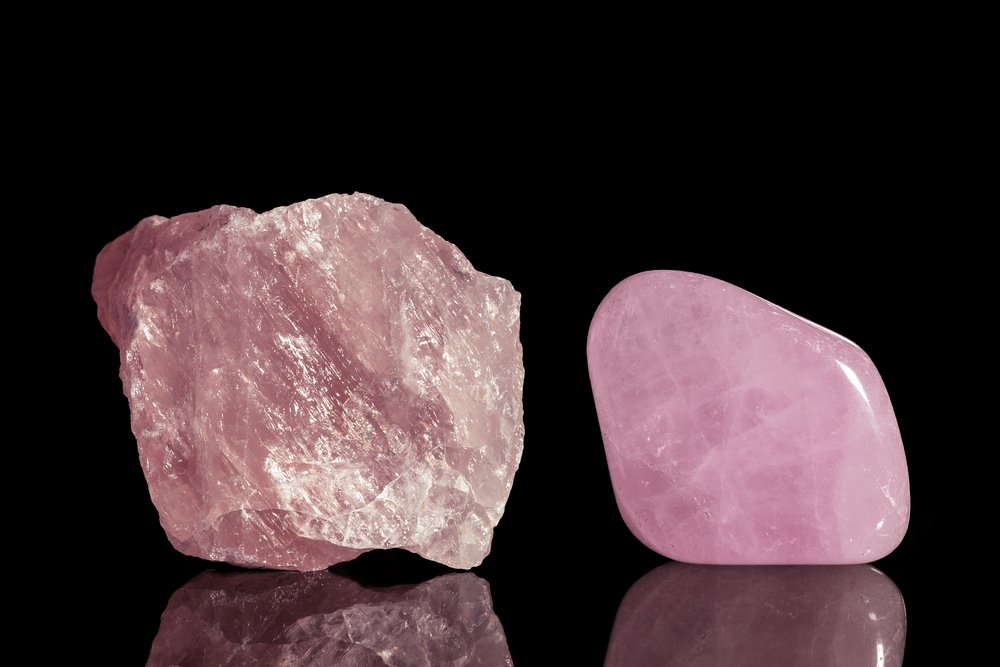
The most famous of the various pink rocks and minerals is rose quartz. This stone is a form of quartz that comes in pink. It’s mostly found as massive formations, where the crystals have been so intergrown that its impossible to tell them apart with the naked eye. The stone is generally pink in color although it can tend towards a more red hue.
Rose quartz’s coloration is often a matter of debate. It appears that the coloration can come from titanium, aluminum, or phosphate. Other theories hold that there’s a fibrous mineral on the inside, but there doesn’t seem to be a true consensus on the matter. Like all quartz, it’s comprised entirely of silica in a crystalline formation.
Rose quartz can also be found as single crystals on very rare occasions. In these cases, the stone is often very transparent and very light pink. On the rare occasions that these are found, they’re often cut into faceted gemstones with an appealing pink color. These can be quite valuable, simply due to their rarity.
2. Inesite
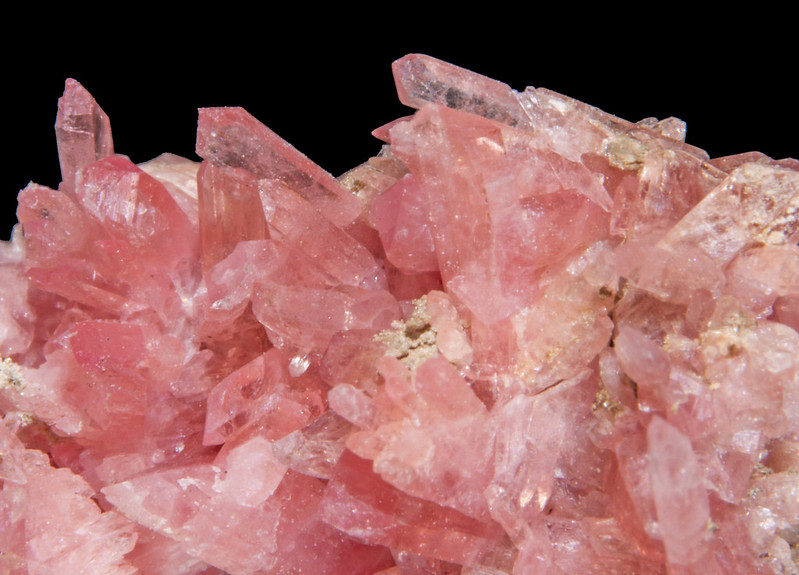
Inesite is a hydrous calcium manganese silicate mineral. It generally bears a deep pink hue, although some of the crystals tend towards the redder side of pink. There is also a rarer brown variant that shows up on occasion, but it’s not nearly as common as the pink variation. It’s sometimes associated with rhodochrosite, another manganese-bearing mineral with pink coloration.
It occurs in a few forms, including a massive one. This latter may be mistaken for rose quartz at first glance, but the radial and fibrous forms are both very distinctive. The material often forms into wide, fan-shaped bundles of fibers.
The mineral’s name comes from a Greek phrase meaning flesh fibers. While that may not sound appealing at first glance, it does seem accurate if you’ve seen much inesite in the past. The mineral isn’t cut into faceted gemstones, the fibrous form kind of prevents it, but it does make for attractive cabochons when cut from the massive form.
3. Rhodolite Garnet
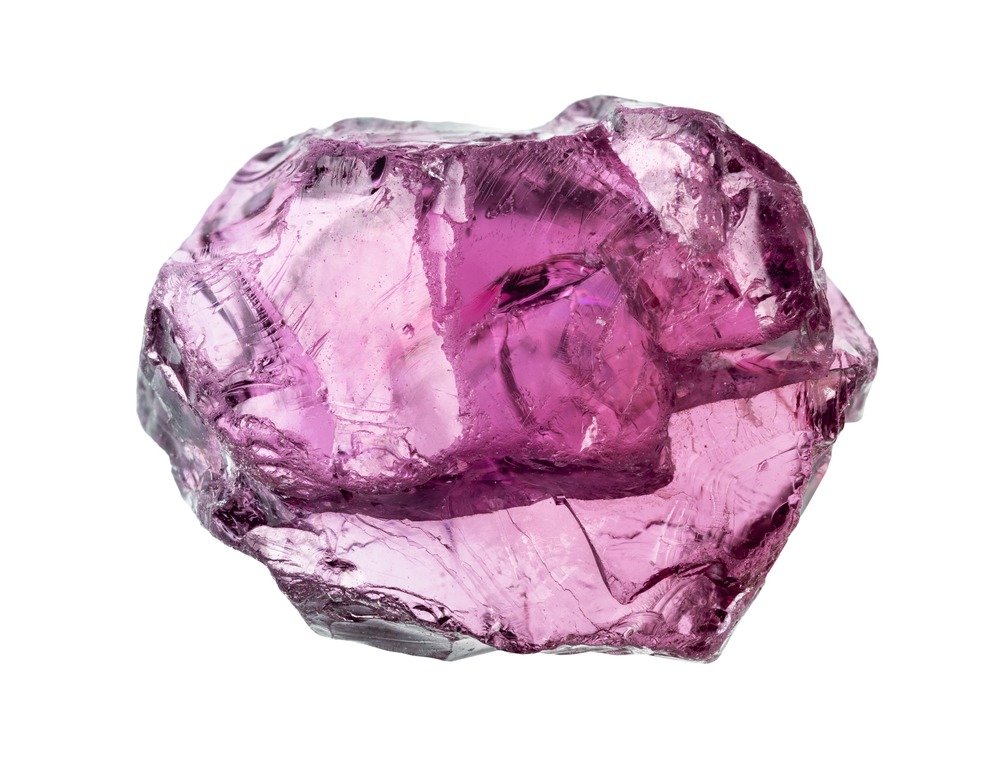
Rhodolite garnet is a pinkish-purple form of garnet. In high-quality crystals, it takes on a very unique color, while among the lesser forms, it’s more often a deep purple-black color. It’s actually part of the almandine garnet series, but the unique color was given its own name.
Rhodolite garnet has become quite a bit more popular in recent years. Unlike many garnets, rhodolite is often found in high-quality, eye-clean crystals and they’re very durable with a hardness of 7.0-7.5. They’ve remained reasonable in price for quite some time and can be found as both accent stones and larger facets easily.
While they’re often sourced in Africa, there are some serious deposits in the USA as well. The name itself actually derives from Greek for “rose-like.” You’ll notice this is common in pink-colored rocks, including such perennial favorites as rhodochrosite and rhodonite.
4. Pink Sapphire
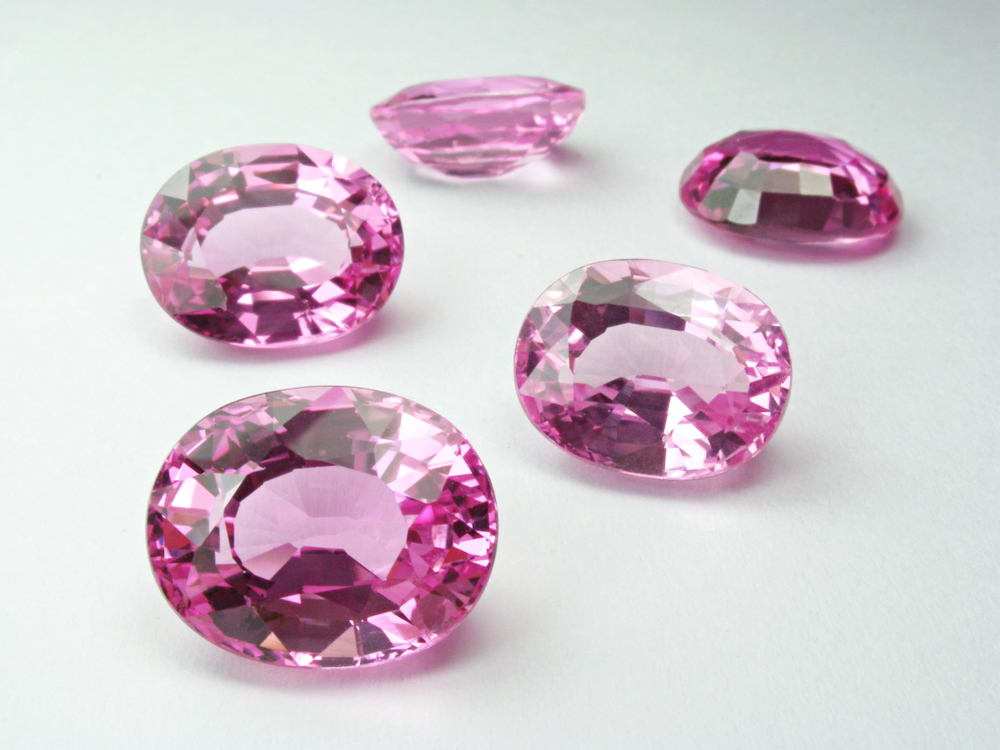
Corundum is a strange mineral, at least when it comes to classification. While some rubies venture into the pink range, the defining feature of a ruby is that its red corundum. Meanwhile, we just call the rest of them by their colors and tack sapphire onto the end. These crystals come in most of the colors you can think of but aren’t necessarily all of gem grade.
When cut as gemstones, colored sapphires can be a bit expensive. While a ruby of the same size and grade will inevitably cost more, sizable specimens of corundum which are eye-clean are very rare. Due to the way corundum is colored, there’s also a wide variety of different pink hues available, from deep pinks with violet tones to very light pink stones.
Pink sapphires are often considered affordable, although there are cheaper choices such as morganite available for pink faceted stones. They’re definitely an affordable alternative to pink diamonds, and while they’re not quite as tough, corundum is still the second thoughts stone of all which makes them a long-lasting favorite for many.
5. Peruvian Pink Opal
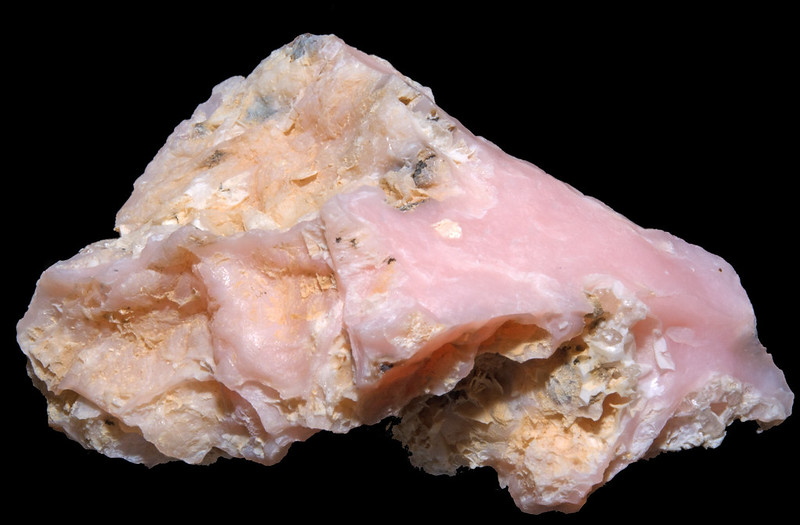
Opals come in many different colors, although not all are precious. Most of the more colorful forms of opal, discounting the internal fire, are actually common opal. Opal is a form of silica that lacks a crystalline structure. Precious opal is a bit different, in that it’s formed of tiny spheres of silica pressed together instead of just randomly scattered molecules.
Peruvian pink opal comes from Peru, of course, and it’s generally a milky, solid pink color. Unlike many stones, there’s usually very little variation of color inside an individual piece. It’s a cheap, relatively common stone for the most part but it’s definitely a great shade of pink. While most stones will have some level of violet or red hue in them, Peruvian opal’s only real variation is simply a lighter shade of pink.
While the color is most often very solid in these stones, there can be some variation. Some stones will have a bit of transparency to them while others will have black dendrites made of manganese minerals contained within them. These are similar to the dendrites found in other forms of dendritic opal.
6. Rhodonite
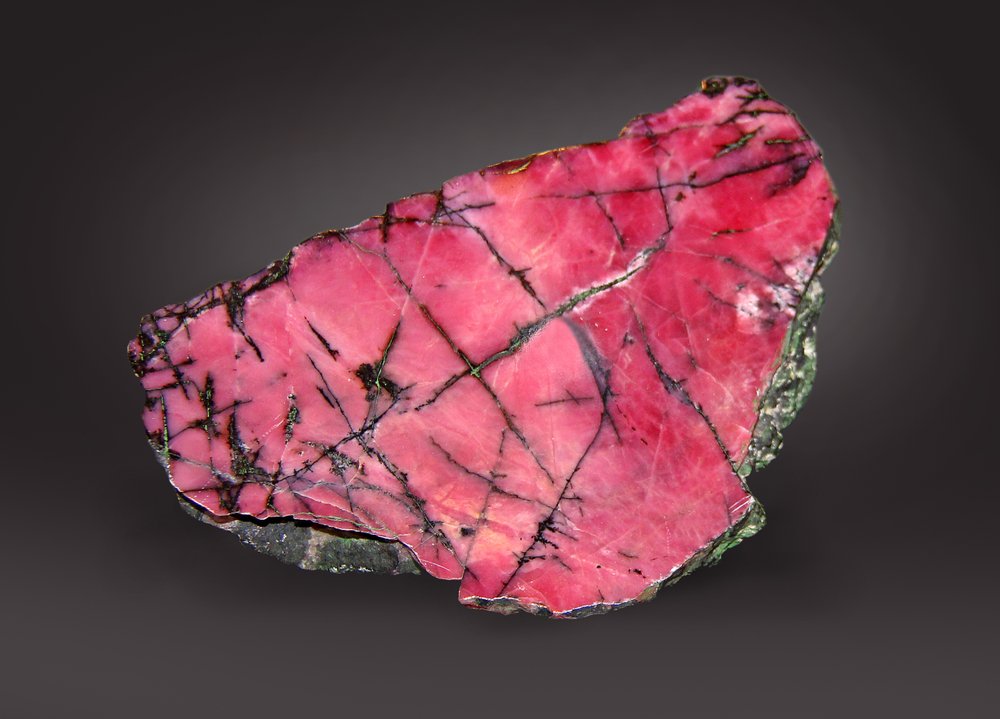
Rhodonite is a popular pink stone that’s heavy in manganese. Rhodonite often has bright pink colors interspersed with black which give it a truly unique look and make it recognizable almost instantly. Rhodonite is fairly common and almost always found in massive form.
While rhodonite crystals are rare, they’re also one of the gems you’ll see with a hot pink color. The crystals themselves are tabular, and not often large enough to cut gemstones from. Gemstones cut from rhodonite range from a raspberry red color to hot pink, with some also displaying a faded pink.
While the massive form of rhodonite with its black streaking is fairly cheap, faceted gemstones cut from this material can get quite expensive depending on the size you’re looking for. The hardness of the material, at 5.5-6.0 also means that any setting it’s place in must also serve a protective effect or you risk breaking the stone.
7. Pink Quartz
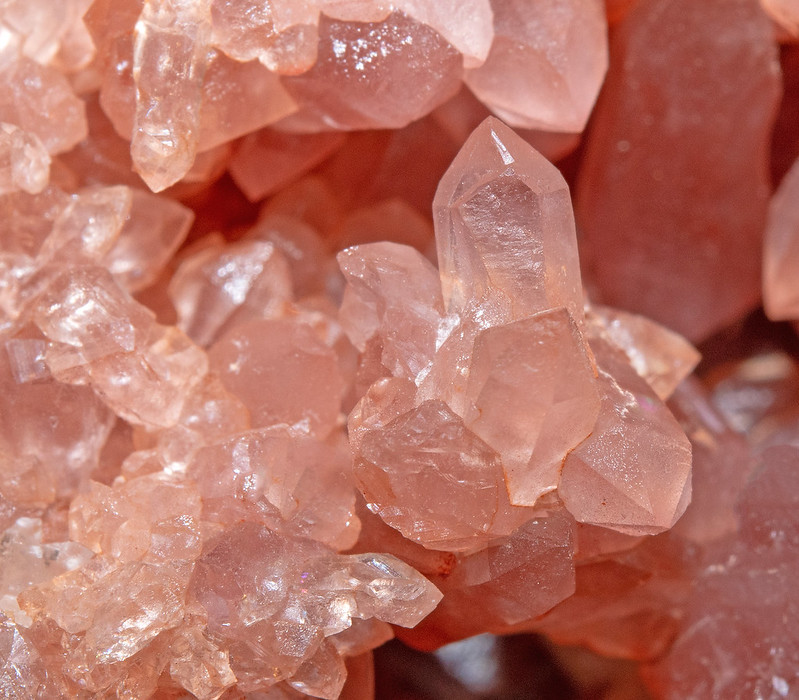
Not to be confused with the rose quartz above. Pink quartz is a pink form of quartz that’s only found as crystals and has a different coloring mechanism than rose quartz. It is only found as crystals, generally an inch or two long. Pink quartz is only found in a scant few places, but was first discovered in pegmatites in Maine in 1938.
While the coloration is quite similar, you can tell the two apart. Pink quartz generally has just a hint of an orange hue to it. They’re colored by aluminum or phposphate trapped in the crystalline lattice, in a similar way to how iron is trapped in amethyst. They then require radiation to actually change to the pink color, which explains their rarity.
Pink quartz crystals are sometimes sold as rose quartz. As a general rule, the easiest way to tell these two minerals apart is through transparency. Pink quartz will generally be water clear and lightly colored, while rose quartz is almost always deeply pink and ranges from translucent to opaque due to the heavy level of inclusions in the primary form.
8. Morganite
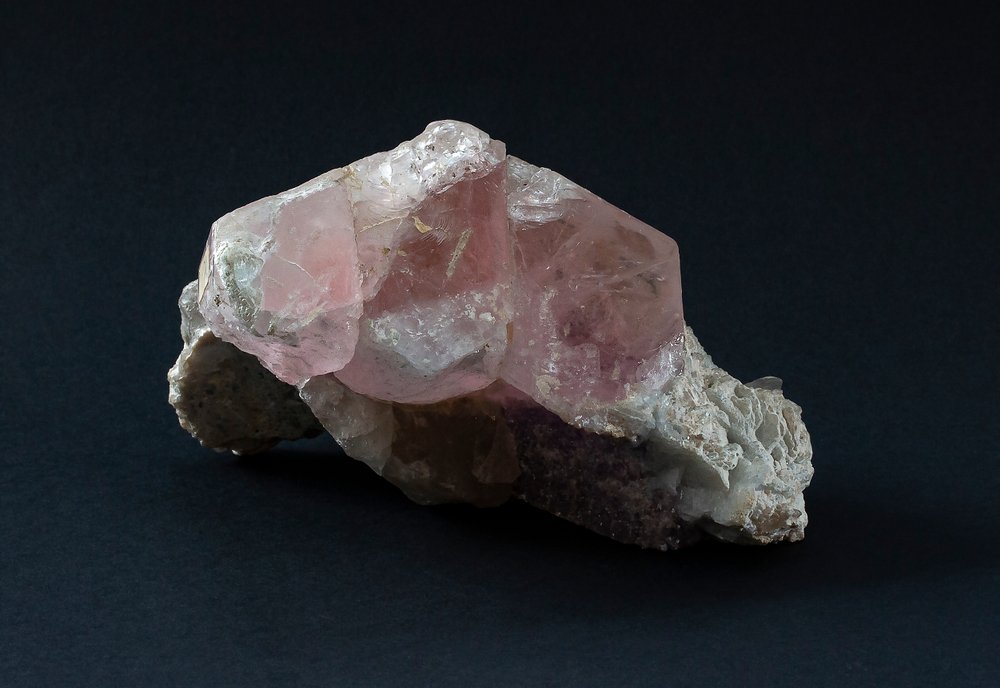
Morganite is the pink form of beryl. This puts it within the same class of minerals as emerald and aquamarine. Like all beryl varieties, morganite is often quite rare and it’s renowned for its hardness. At an 8.0, only corundum and diamond actually beat it out which makes it an excellent choice for rings and bracelets.
These stones are generally very light pink and are often cut into faceted gemstones. Morganite is also found in massive form and makes attractive peach-colored cabochons. Eye-clean stones aren’t super common, but they can definitely be found for a reasonable price. Morganite is a favorite for engagement rings, owing to its durability and relative cheapness compared to other pink, faceted stone options.
Morganite has only recently gained any real popularity, mainly owing to the fact that gem-quality specimens of pink or peach colored beryl were only found in 1910 or so. The largest ever found actually comes out of Maine, although the gemstone mines in Southern California also produce a lot of it.
9. Kunzite
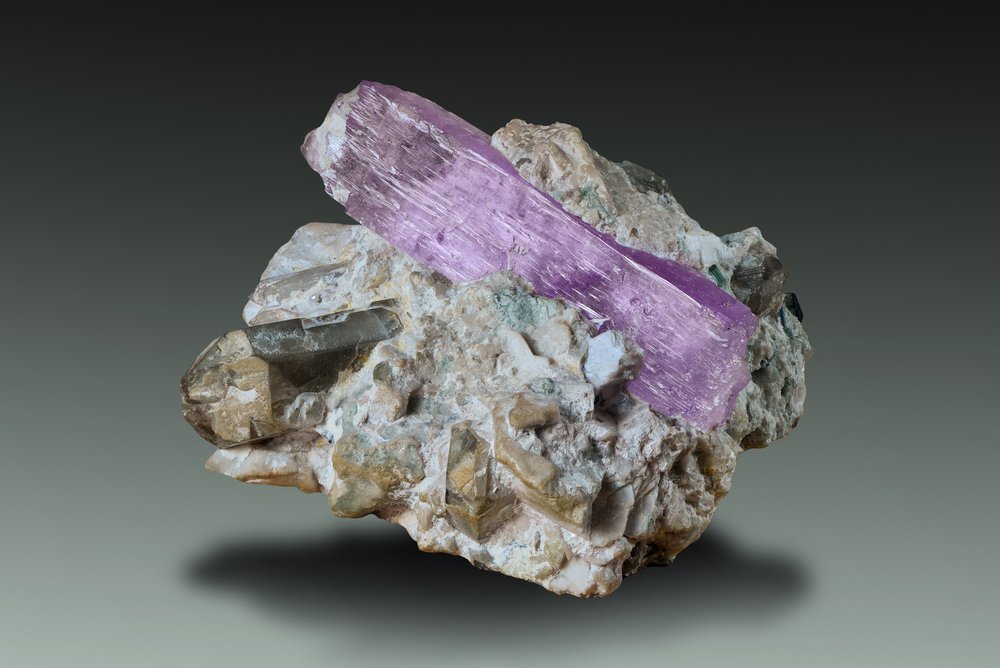
Kunzite is the most well-known variety of the mineral spodumene. Spodumene itself is a high-lithium feldspar mineral. The coloration of the gemstone comes from included manganese, and the stone itself ranges from hot pink to violet-purple depending on the specific specimen.
Much of the kunzite in the world comes from California. That said it can be found in many places across the world, including Brazil, Afghanistan, and Mexico. It has a tendency to fade in the sun, which results in there being a lot of colorless or otherwise miscolored kunzite.
Faceted gemstones of kunzite are available but may be unsuitable for jewelry on the hands and wrists depending on how hard you are on your jewelry. It’s still very suitable for pendants and it’s not so fragile that it can’t work with a ring as long as you’re mindful and it’s in a protective setting.
10. Pink Moonstone
Pink moonstone is a variety of feldspar that shows a pink coloration. It generally displays a bit of an inner glow, not as dramatic as some of the other varieties of feldspar but attractive nonetheless. While some pink moonstone is actually pink, the vast majority will tend towards a peach coloration.
Unfortunately, the name has also come into use for a type of rainbow moonstone with an artificial pink backing. These are almost always sold as finished jewelry with a solid backing in order to hide them, and it’s rarely disclosed. Some dyed material may also be present on the market, especially with milky-looking labradorite.
The actual stuff is often quite attractive. It’s sometimes mottled with different shades or with white, which makes for interesting patterns when the material is cut into cabochons, and cut properly you can truly bring out the glow in them.
11. Pink Spinel
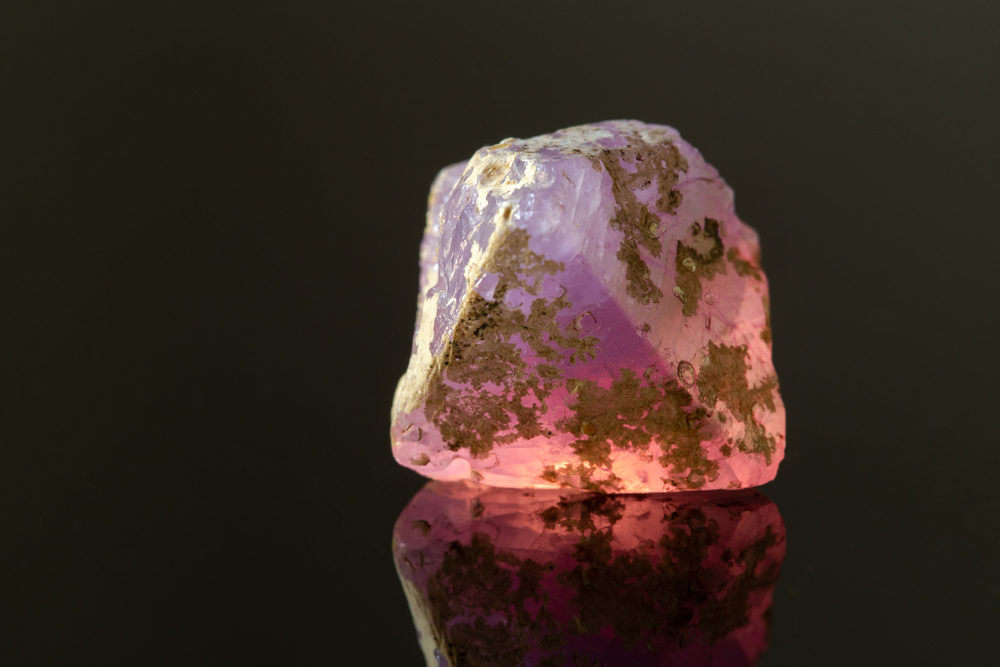
Spinel is another one of those gemstones that shows up in a huge variety of different colors. Among the pink specimens, it has a huge range of different possible colors, from hot pink to a much less apparent rose color. There are certain specimens with purple mixed in a bit as well giving them a bold coloration.
Spinel is probably best known by gem collectors, it’s been mistaken for other stones quite often. Some of the most famous “rubies” out there were later found to be spinel as people became more educated in how to test gemstones. Spinel is much harder than most stones, at 7.5-8, so the practical difference is fairly small.
Pink spinel is rather rare, and they’re one of the more expensive colors of this type of gemstone. They’re still precious gemstones after all, and often bottom out at $500 or so per carat, with increasing prices as the grade of the stone increases. As with many colored stones, the big factor in pricing is always going to be the color, followed clarity and cut.
12. Tourmaline
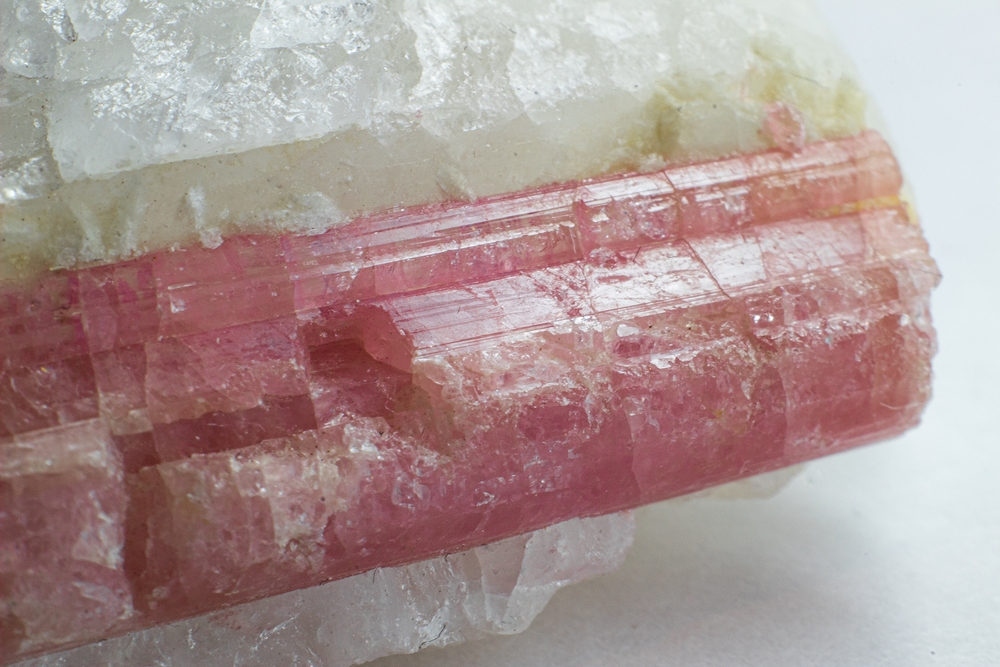
Tourmaline is a silicate mineral that comes in an outstanding variety of colors. Perhaps the two most famous types of tourmaline are green and pink… and those are often contained in the same crystal! These bi-colored crystals are usually referred to as watermelon tourmaline, but it certainly shows up with just pink as well.
Tourmaline is found across the world, but the vast majority of it is an opaque black crystal. These are generally referred to as schorl. Other colors can reach the same intensity as higher-end gemstones, such as chrome tourmaline’s comparison to emerald or rubellite (gemmy red tourmaline) being compared to ruby.
While tourmaline comes in all kinds of colors, the pink specimens and the green ones are the most common. Most often these will have a bit of an earth-tone touch to their hue, rather than being bright pink, but rose and deep pink specimens are also found on occasion. Tourmaline can be very individual stones, and the pink variety are relatively cheap so you’re sure to have options!
- Online rock and mineral club for collectors of all levels!
- Find community with like-minded rock and mineral enthusiasts.
- Monthly Giveaways!
- Free Access to Entire Digital Library of Products (annual memberships)


